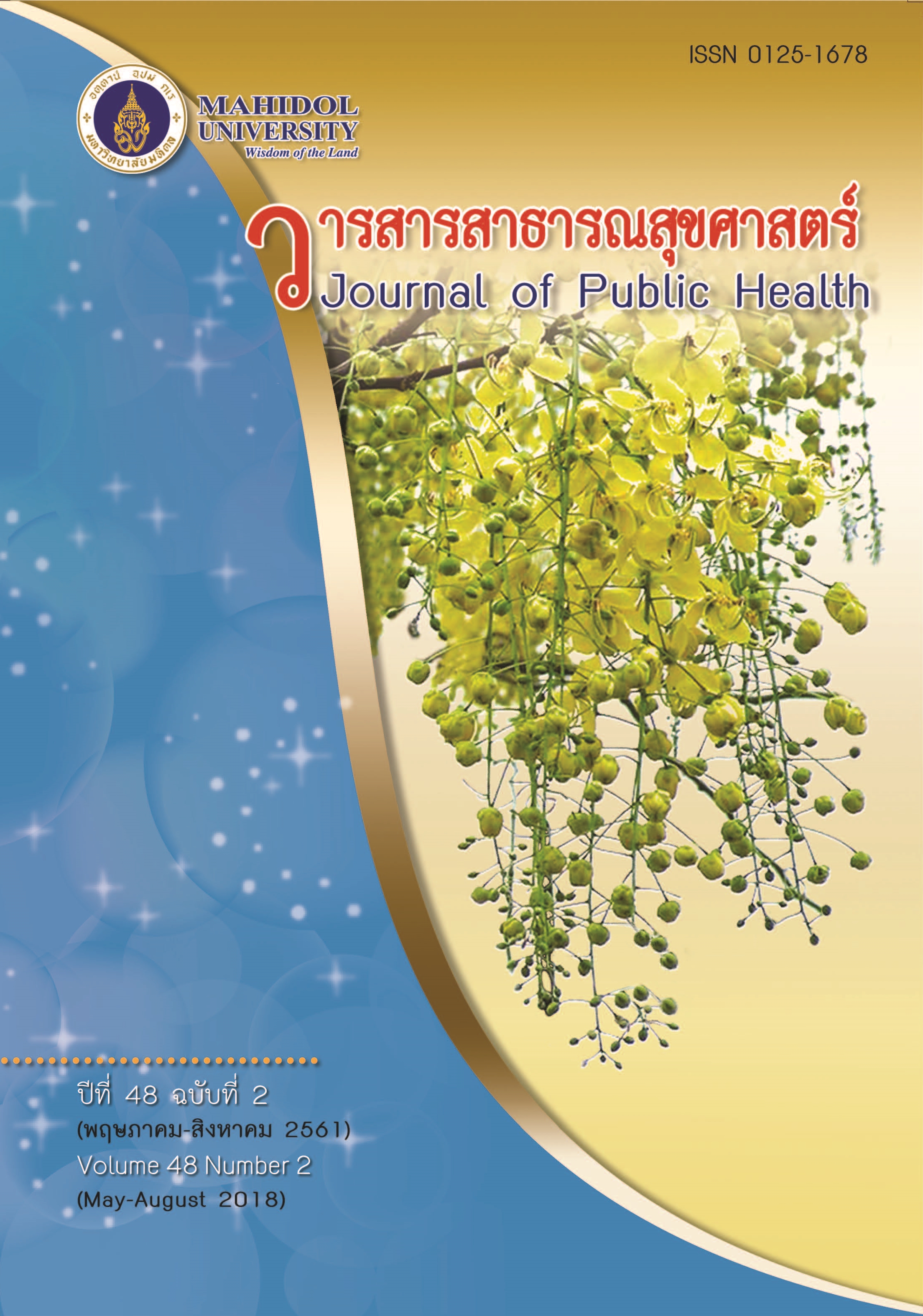Prevalence of Pulmonary Function Decline among Industrial Workers in Three Petrochemical Plants: Case Study in Rayong Province
Keywords:
petrochemical industry, spirometry, pulmonary function decline, health surveillanceAbstract
This study aimed to determine the prevalence of longitudinal decline of pulmonary function in workers in 3 petrochemical factories in Rayong Province. The pulmonary function data came from annual health surveillance programs carried out by Rayong Hospital at 3 factories from 2008-2016. A total of 2,595 workers’ data was used to calculate the average loss of FEV1 and FVC which are 45.97 ± 41.37 ml annually and 39.87 ± 47.08 ml annually, respectively. Also, we calculated the FEV1 decline in each follow-up year compared with the baseline value of each worker. Standard criteria adopted by NIOSH, ATS, ACOEM and the Association of Occupational and Environmental Diseases of Thailand suggest that workers with more than 10 or 15% decline compared with baseline value require further evaluation by physicians. The results showed 10.6, 21.7, 25.3, 42.3, 44.3, 52.4, 61.0 and 50.7% of all workers had more than 10% decline in each follow-up year. Moreover, 3.2, 7.3, 9.6, 17.8, 20.0, 25.2, 31.8 and 23.9% of all workers had more than 15% decline in each follow-up year. This type of longitudinal interpretation still lacks proper guidelines regarding how and when to update the baseline value of each individual, similar to the NIOSH 1998 or NHCA 2011 for audiogram test. Further studies should pursue this aspect.
Downloads
Published
Issue
Section
License
Creative Commons License CC-BY-ND


